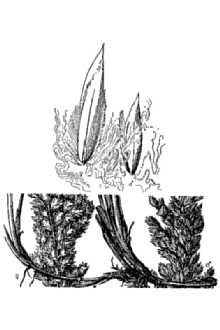Texas Bluegrass
Scientific Name: Poa arachnifera Torr.

| General Information | |
|---|---|
| Usda Symbol | POAR |
| Group | Monocot |
| Life Cycle | Perennial |
| Growth Habits | Graminoid |
| Native Locations | POAR |
Plant Guide
Use a soil moisture meter to monitor the soil moisture where Texas Bluegrass is planted.
Fact Sheet
Uses
All livestock use texas bluegrass for winter grazing throughout its range, It has also been used as a lawn grass, , Use soil moisture sensors to measure the soil moisture of Texas Bluegrass.
Status
Please consult the PLANTS Web site and your State Department of Natural Resources for this plant’s current status, such as, state noxious status, and wetland indicator values.
Description
Grass Family (Poaceae). Texas bluegrass is a native, cool-season, rhizomatous perennial. The height ranges from 10 to 20 inches. The leaf blade is mostly basal, long, narrow, and boat shaped at the end. The seedhead is a narrow panicle with somewhat compressed 2 to 4 inches long and male and female spikelets on the same plant. Distribution: For current distribution, please consult the Plant Profile page for this species on the PLANTS Web site.
Management
From Britton & Brown (1913) @ plants.usda.gov Grazing should be deferred in spring every few years to allow this grass to produce a seed crop. It is a key management species on some sites that are winter grazed by cattle and sheep. If it is, no more than 50 percent of current year's growth by weight should be removed by grazing.
Establishment
Growth begins in the fall. Foliage stays green all winter, if moisture is available. It becomes dormant through the hot summer months. In extremely low temperatures, leaves freeze but more leaves grow from auxiliary buds on the basal nodes. It reproduces from stolons and from seed. Seeds produced in the spring germinate in the fall. It grows best on clay and clay loam soils. Cultivars, Improved and Selected Materials (and area of origin) Please contact your local NRCS Field Office.

